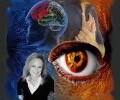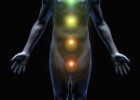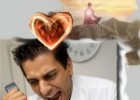Applying Consciousness to World Crisis
A World in Crisis
The world once again watched in horror as a catastrophic event threatened the existence of many life forms. The BP oil spill, the worst environmental disaster ever to occur in the United States, is spewing an estimated 1.5 million gallons of oil daily into the Gulf of Mexico. Americans watch the signs of this destruction—birds and other wildlife covered in oil, black goop washing onto pristine beaches—and we can only imagine the dark destruction that is taking place below the water’s surface. On land, Louisiana residents are facing another devastating act against their environment. Reports are surfacing that people are suffering from anxiety and intense rage, and the number of suicides is on the rise.
Finding ourselves in the midst of yet another suffering situation that has its basis in corporate greed, and in challenges to our societal value system, many of us feel helpless and wonder what can be done. In order to deal with feelings of our own victimization as well as our concern for the natural world, we point fingers. Judgments fly as we try to offset our personal sense of vulnerability by assigning responsibility for this disaster.
Political groups point fingers at the President, whom they accuse of being slow to act, environmentalists point fingers at BP for its irresponsibility toward the environment, and spiritual groups abandon the concept of connectivity when it fails to produce love and togetherness. These postures can serve to assuage our anger by creating an illusion that we are not responsible and are therefore free of all guilt.
However, individually, we can develop our consciousness if we go deeper into our own minds to understand what is actually occurring. Poised at the brink of this disaster and its aftermath, we can redeem this destructive situation and evolve our collective consciousness.
The phrase “we are all connected” is bandied about in many intellectual and spiritual circles, but what does it really mean? How can we apply this notion to a crisis like the BP oil spill, in a way that benefits humanity?
Connectivity through Consciousness as Solution
By framing the recent disaster in terms of Carl Jung’s concept of the collective unconscious, linked with a framework called Integrative Consciousness, we can begin to understand the extent to which our connectivity to each other has created the events we now witness. We can also move beyond victimization and into a deeper development of our consciousness, and by doing so can evolve the social collective.
Jung, proposed the concept of the collective unconscious, which he believed contains material that individuals disown. This material manifests and projects onto events and other people. These events express our inner realities and serve as surface reminders to individuals who do not trust direct experience with his/her inner self. The unaware individual treats such an event as reality, as separate, with no connection to his/her self.
This disowned material is the shadow, or the opposite, of what we as a society hold dear. American society values honor, integrity, selflessness, prosperity and success. We reject dishonesty, greed, failure, and selfishness—out of our fear. When we turn away because of fear from an aspect of a value, then inner conflict exists. We are therefore engaged in the casting out process.
But according to Jung, what we cast out, we nevertheless manifest. When the cast-out energy reaches a threshold within the collective unconscious, the pattern activates, manifesting into reality and influencing individuals and groups that are susceptible to acting out that pattern. There is no escape from the cultural shadow. The manifestation of the disowned material, in its many physical forms, places us in relationship to the shadow at an outer ego level.
We are a culture currently witnessing the collapse of certain social values as the parts of ourselves that we have excluded, denied and repressed over decades rush back into our existence and play out on the world stage. Those of us who have the ego strength, a developed psycho-spiritual practice, and the willingness to explore our inner natures must assume the task of facing this material—the cultural shadow—as it projects onto world events. As fewer individuals contribute the energy of their own repressed material to the collective unconscious, change occurs more easily.
World in Transition
Our world culture is in transition, and we live in tumultuous times. Technological advances have transformed all of us into instantaneous witnesses to any event that occurs on the world stage. We can’t ignore things that happen simply because they don’t take place in our backyard, nor can we plead innocent in these matters because we don’t have a direct hand in creating them.
Changes of this magnitude that involve groups of people are a result of the collective unconscious welling up. These changes are the accumulating shadow material of individuals in a particular culture. “Follow the corruption,” a former teacher of mine would say, “as corruption reveals the welling up of the cultural unconscious illuminating the structures that are in the process of change.”
The corruption of Wall Street exposes a pattern of greed. The crisis in the housing market exposes the dark side of the American Dream: our fear of unhappiness if we lack material wealth. Other patterns speak to the distrust of corporations, such as Enron and WorldCom, as demonstrated in their bilking of customers at a time when many people had begun to depend on these entities for financial security and life’s necessities. The destruction wrought by Hurricane Katrina, an act of nature compounded by a lack of action on the part of the Bush administration, reflected the inability of our government to aid people in need.
These forces aim to break up the structures of the past, such as beliefs and values that no longer serve humanity. They typically appear in the form of violence, destruction and corruption, and are necessary to prepare the soil for a new order that is to come. Only through discovering why such events happen, can a person withstand or make more bearable their horrific nature. As a society, each individual is attempting to come to terms with material wealth and greed, find a way back to the natural world and develop a personal power away from the dependency the industrialized world has brought us.
The first step in my consciousness practice is to catch a glimpse of the collective unconsciousness to which I am most reactive, and to examine my relationship with this dynamic. The challenge is to change this reactive relationship to one of compassion and stillness, free of anxiety and conflict. Integrative Consciousness provides the framework for me to journey safely into my piece of the material of the collective unconscious.
Daring to Take on the Challenge
Awakening to the collective unconscious does hold dangers for an individual. Just as a family will use any means necessary to bring a unique child back into the fold of a family system, so too may the collective enforce its will. Society might attempt to reclaim the individual who ventures out to explore collective dynamics by presenting that person with power struggles of ego-inflating or ego-deflating circumstances intended to keep the individual in line with the collective’s orientation. So, the potential exists for a person’s journey to end before real transformation occurs.
Integrative Consciousness
Integrative Consciousness consists of techniques that enable an individual to consciously venture into a relationship with objects and events without the interference of power conflicts. This concept contains the stages of awareness, acceptance, integration and resonance. The premise is that as an individual comes into awareness of the unconscious structure, bringing it into the conscious mind, then it becomes an object of the ego.
An aware individual can act on the object, effecting change and exercising free will. By nurturing this relationship to the object and finding complete acceptance within this relationship, the process of integration begins. The fearful and defensive aspect of our surface mind (ego) has fallen away, integrating into the larger consciousness state and is replaced by stillness of mind. Integrative Consciousness allows us to be present to what is.
So, how does the premise of Integrative Consciousness apply to a disaster such as the oil spill, and how do we as individuals develop our citizenship to the world?
Awareness
Exploring our example of the oil spill, I can discern aspects of the collective disowned unconscious. One pattern reflects our relationship to greed, as expressed in BP’s need to capitalize on a dwindling oil supply, the nation’s huge appetite for oil. Another pattern is our failure to own up to our personal responsibility, reflected in our pointing fingers and our assertions that those responsible for this disaster will pay. We’ve ignored the role we’ve played in these events.
In our feelings of helplessness and anger toward the Obama administration for failing to push harder to resolve the problem, we see a pattern that reflects our own relationship to powerlessness and a fear of being inept. A fourth pattern consists of our willingness to sacrifice our oceans and ocean life to drill for oil that will sustain a way of living that we think is our due. Here, we see our relationship to our own selfish natures. These examples represent only a few of the subconscious collective patterns, reflective of an eroding of our cultural values, which are emerging in this crisis, all of which are bringing transformation.
I become aware that I am reacting intensely to the greed of BP that underlies their decisions to cut production costs for the pipeline. As I hold this awareness and my anger towards BP’s greed, I come in touch with my own vulnerability of being safe and secure in life. Once I have reached a vulnerability with a reactivity, then I can move onto the next stage, acceptance.
Acceptance
In the second stage of Integrative Consciousness, acceptance, the aim is to find a compassionate relationship to the structure, or the ego object. We can easily obtain compassion from a heart-centered awareness. Heart-centered awareness assists a person in making the shift from an ego perspective to a “witnessing observer” state. In other words, the ego steps aside. From this place, a person can develop a compassionate relationship to the object. The object in my case is insecurity.
Using the heart-centered state of consciousness, I can safely be present with my fear of insecurity until I feel acceptance and avoid re-victimization. To do this, I shift my awareness to the right of the physical heart and bring in the fear-based object: insecurity regarding BP’s greed. The challenge becomes for me to hold my awareness at the heart alongside the fear until my relationship to insecurity shifts from fear to something else. Once a shift occurs, the ego has dropped its defenses.
When I am in ego defense, then my fear will victimize me, or my ego will find a means to move into power. Left defenseless, the ego will always reach for power and defense. The BP case illustrates this in the public’s outrage at the company’s greed and their insistence that BP pay. Anger creates an “illusion” of power, as fear always lies beneath anger.
Integration
The integration phase of Integrative Consciousness can only advance from an undefended ego. Ego defense prevents integration into the larger state of consciousness, and thus one can never achieve stillness of mind. My challenge at this stage is to stay present with my compassion and my insecurity. Integration occurs in its own timing. Once integration happens, my relationship to security transforms. I am no longer contributing to the collective unconscious fear.
Resonance
The fourth component of Integrative Consciousness is resonance. When I have integrated powerlessness that the ego previously defended against, I have a quiet and still mind. Individuals or companies involved in power dynamics do not affect or influence me with their fear and manipulation. I can see the truth beneath their deceptiveness. I can interact in a stable way that allows another individual to begin his/her process surrounding security issues. Also, an awakened individual can perceive the larger purposes behind these catastrophic events and understand the sacrifices many people make to bring about transformation on collective societal levels.
Through the quiet mind, a person can access a resource that allows creative adaptation to occur, influencing the world situation beyond surface changes. Just because we clean up the oceans, BP pays for the crisis and government imposes more regulations on offshore drilling does not necessary resolve our culture’s beliefs surrounding greed. A person who has integrated his/her consciousness with the shadow elements that underlie a world calamity is able to hold a stillness of mind and heart. Through the quiet mind, that person can access a resource to adapt creatively in a way that influences change at the heart-of-the-matter. The healing of the world takes place through the healing of self.



